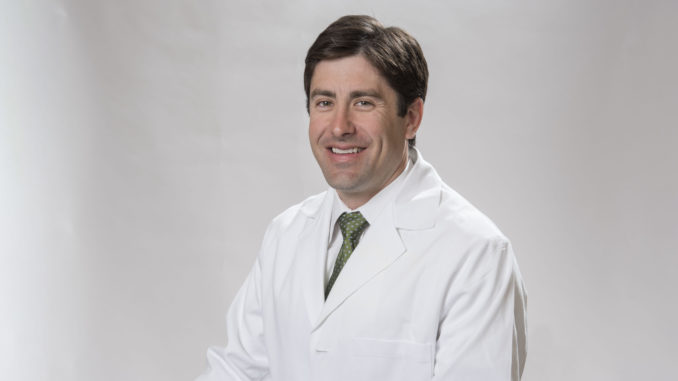
Quit smoking, exercise, eat healthy
With the New Year upon us, now is a great time to address health and chronic pain issues that may have impacted you in the past.
Chronic pain is a complicated disease state and, as a pain management physician, I feel it is important to address pain from many different angles.
I often recommend physical therapy and lifestyle modification to my patients, in conjunction with medications and procedures. I have found that there are some things that patients can do, in addition to physical therapy and lifestyle modification, to decrease their pain without requiring medications or procedures.
These simple steps can also result in the added benefit of improving overall health as well. Quit Smoking
Smoking can cause tiny blood vessels to constrict in all parts of your body, including your heart, lungs and kidneys. It also causes constriction of the tiny blood vessels that supply intervertebral or spinal discs, leading to poor perfusion which can compromise their function and structure and lead to pain. Smokers have also been shown to have higher pain scores and not respond as well to pain medications as non-smokers. Smoking may change our pain thresholds or alter the way pain signals are transmitted to our brain.
Therefore, smoking cessation is very important in the management of chronic pain. Exercise
Exercise stimulates the release of endorphins, which can be thought of as hormones that make you feel good. These potent “feel good” hormones can directly combat chronic pain receptors and lessen pain.
The added benefit of exercise is an improvement in overall strength that can help support the spine and decrease stress on the bones, ligaments and discs of the back. Eat a Healthy Diet
A healthy, well-balanced diet can decrease weight and improve blood flow.
Obesity is a major contributor to chronic pain because it adds more stress to all of our support structures. Obese patients are also at a higher risk to develop diabetes, which can cause damage to your blood vessels similar to smoking.
A diet low in refined carbohydrates and sugars is best to follow and don’t forget to include plenty of fruits and vegetables. Get Plenty of Sleep
This one should be a no-brainer. We all know we can be irritable without sleep and pain sensation is also heightened when you are sleep deprived. It is recommended that adults get between seven and nine hours of sleep a night.
Avoid alcohol and sweets before bed to improve sleep quality. Complementary Techniques
While many may not be familiar with the above term, we use this when we talk about non-traditional approaches to pain, such as acupuncture, yoga, meditation and other relaxation techniques.
Yoga is a form of exercise that can improve strength and also helps to focus the mind rather than keep it spinning. Acupuncture is a component of traditional Chinese medicine that involves the use of tiny needles placed in targeted areas to treat certain maladies.
It has been used to treat everything from depression to pain to infertility. Meditation can be practiced in just a few minutes a day to help focus the mind much like yoga. Another benefit of Meditation is that it doesn’t take long and can be done anywhere. There are some great apps available for guided meditations.
I hope this simple list can help those of you battling chronic pain start your year off right.
If you’re interested in setting up an appointment to discuss your options when it comes to chronic pain, call 985-785-5771 or visit MyOchsner.org.Dr. Domenick Grieshaber is a native New Orleanian. He completed his undergraduate education at Louisiana State University in Baton Rouge where he received a Bachelor of Science in Biology. He attended medical school at Louisiana State University in New Orleans where he graduated in 2009.Grieshaber then completed his residency in anesthesiology at Ochsner Clinic Foundation. He then completed a fellowship in Pain Management at the Cleveland Clinic in Cleveland, Ohio.




Be the first to comment